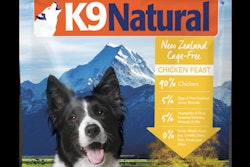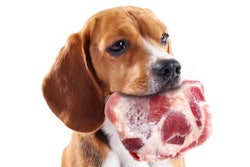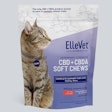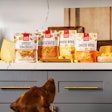
The Pet Food Committee of the Association of American Feed Control Officials (AAFCO) discussed pet food labeling modernization efforts at their January meeting, wrote Dave Dzanis, CEO of Regulatory Discretion, in his Petfood Industry column.
-
Pet Nutrition Facts Box
In an effort to provide nutritional content information more akin to what consumers are used to seeing on their own food labels, a "Pet Nutrition Facts Box" has been proposed. It would replace the current guaranteed analysis and calorie content statement. Visually, it would appear very similar to the Nutrition Facts Box (e.g., table format, black text on white background) but the content wouldn't precisely correlate.
Like a human food label, it would provide information on a standardized “per serving” basis (e.g., amounts per cup or can), but the guarantees in terms of percentages or units per kilogram would still be there, too. Calories would be provided on a per serving basis only, but would be further broken down as to contribution of calories from protein, fat and carbohydrates. Terminology would be simplified; for example, "protein" instead of "crude protein."
-
Nutrition and feeding
The proposal is to retain the current labeling requirements in terms of a nutritional adequacy statement, but to include mandatory front-of-pack graphics as well. Labels of all complete and balanced pet foods would need to bear a standardized graphic indicating the specified life stage(s) and size(s) for which it is formulated. A unique graphic also has been developed for treats, nutritional supplements and other foods that are not intended to serve as the sole source of nutrition (e.g., toppers). There would be a third graphic for products intended for use under veterinary supervision.
-
Ingredients
This may be the most difficult aspect in which to initiate changes, as any alteration may be in direct conflict with existing Food and Drug Administration regulations. For example, one idea is to separate out the vitamins and minerals to better identify them as nutrients as opposed to scary "chemicals." However, that would seriously disrupt the order of predominance of ingredients as mandated by FDA.
Using more simplified but less accurate names of ingredients for the sake of consumer understanding would also be problematic.
-
Handling instructions
Provisions to require directions for safe handling and feeding of products are being considered. These can be in graphic and/or text form, and unique depending on the type of product (e.g., dry versus canned versus frozen). Due to label space concerns, a link to a non-commercial website to provide more comprehensive instructions is being considered.
















